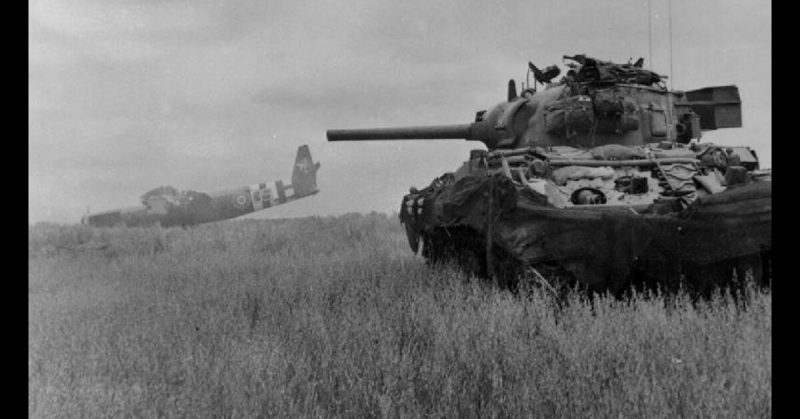Tony Buzbee is an attorney in Houston. Tony Buzbee is also a history buff. Tony Buzbee, the attorney and history buff, spent $600,000 on a World War II-era Sherman tank. Then Tony Buzbee parked his tank in front of his home in a high-property value district of the city.
Life would be pretty good except that Tony Buzbee has neighbors and those neighbors are not pleased to see Tony’s tank when they look out their windows. They have contacted the homeowners association, the River Oaks Property Owners, to voice their concerns about increased traffic in the neighborhood from sightseers and complain about the safety issues that they feel come along with having a WWII tank on the street.
Buzbee understands that some people aren’t happy with this piece of history, but doesn’t feel it is hurting anyone at all. Children come over to climb on it. Area residents have stopped by to check it out. In Buzbee’s mind, the tank is a value-add for the community.
This isn’t just any tank. This is a Sherman tank that landed on the beach at Normandy on D-Day. This is a tank that helped free Paris from the Nazis’ grip. This is a tank that was in Berlin when it fell. This is a true WWII hero that has been restored to its former glory.
The M4 Sherman tank was named after General William T. Sherman who served in the American Civil War. It is one of the most famous tanks of all time. Designed to be cheap and easily manufactured, it was only passed by the Soviet T-34 in terms of units delivered. Easily maintained, well-armored and well-equipped with weapons, versions of the Sherman tank were used by the US military well into the Cold War.
The M4 was the first tank with a fully revolving turret. The M3 was designed to have this feature, but the extreme shortage of tanks on the Allied side at the beginning of the war forced the US to begin producing the M3 before the new turret was ready. Almost as soon as the M3 began production, work began on designing the M4.
The M4 was continually updated and modified throughout WWII and beyond. Versions were made with rocket launchers. Others had bulldozer blades. Some were amphibious, designed to drive along the sea floor at depths up to three meters. Some were outfitted with bridges, and others had attachments for clearing mines or removing destroyed vehicles from the battle lines.
Buzbee’s tank was part of the D-Day invasion of Normandy on June 6, 1944. On that day, over 160,000 Allied soldiers attacked a 50-mile expanse of beach in France. The German’s were prepared though and had set up a solid defense. Over 9,000 Allied soldiers were killed or injured in the fighting. In the end, the Allies were able to defeat the Germans at Normandy and begin their push which would end with the fall of Berlin.
He knows that the critics could try to tow his tank away or give him a ticket. He also knows that, until he’s ready to move it, that tank is not going anywhere. There’s no specific ordinance about parking a tank in front of your home, an oversight that the HOA seems to regret as they sent a strongly worded letter about the concerns of his neighbors.
For the record, he has plans to move it to his east Texas ranch. Given that it took Buzbee a year to have his tank delivered to his Texas home from Europe, he might just want to keep it at home for a bit first. So for now, the tank remains in the neighborhood – an eyesore or an asset, depending on how you want to look at it.
